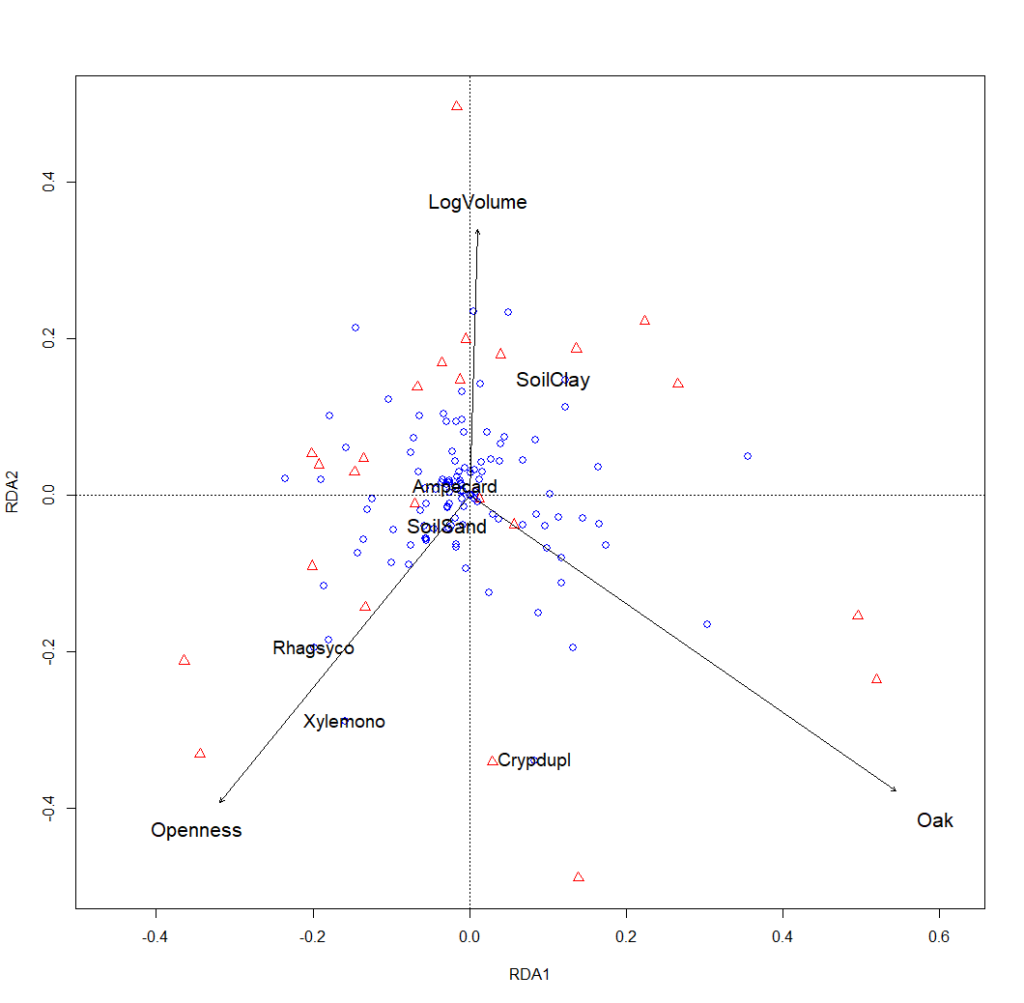In total, 3720 individuals of 220 species were identified from 31 log piles constructed for stag beetles. The number of saproxylic beetles varied between 17 and 55 per log pile (1-12, 1-5 and 2-36 species per eclector, sieve and pitfall, respectively). There was a considerable difference in number of obligate- and facultative saproxylic beetles. Obligate saproxylic beetles were dominant and consisted of 139 species, while facultative saproxylic beetles consisted of 81 species. All threatened saproxylic beetles that were identified were also obligate saproxylic and consisted of 315 individuals of 18 species.
Species composition and environmental variables
For obligate saproxylic beetles, landscape and site factors explained 21% of the variance in species composition (R² = 0.21, F = 1.3, p = 0.025). For facultative saproxylic beetles, variation explained was slightly less (R² = 0.18, F = 1.07, p = 0.324).
There were differences in species composition between log piles situated on sand and on clay. Most species showed a correlation with log piles situated on sand, rather than clay. Species composition was explained by soil type (R² = 0.06, F = 1.46, p = 0.04) and the amount of large old oaks at 1000 m radius (R² = 0.07, F = 1.77, p = 0.004).

Stag beetles
Stag beetles (larvae and/or adults) were observed at 13 out of 31 log piles. Adults were caught with pitfall traps at 10 out of 31 log piles and consisted of 15 females and 1 male. Larvae were observed at 5 log piles and consisted of 14 individuals.
The odds of recording a stag beetle were higher when logs were on sand than on clay soil. The odds were approximately 5 times higher when on sand soil, however, the difference was not significant (logistic regression: p = 0.217).
Effects of environmental variables on species richness and abundance
For obligate saproxylic beetle species, both richness and abundance were significantly higher in sand compared to clay (Table 2). For abundance, the amount of large old oaks at 1000 m radius had a significant (p = 0.002) effect as well, however, the amount of large old oaks had a negative effect on the abundance of obligate saproxylic beetles.
Parameter estimates (with standard error) and p-values for models of species richness and abundance on obligate saproxylic beetles, as well as change in AICc (ΔAICc) when removing a variable from the final model. Sand refers to soil type, openness refers to canopy openness, oak refers to the amount of large old oaks at 1000 m radius and log volume is in cm³. Significant (< 0.05) p-values in bold.
